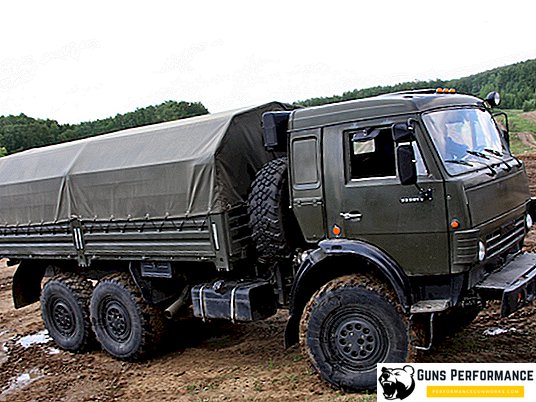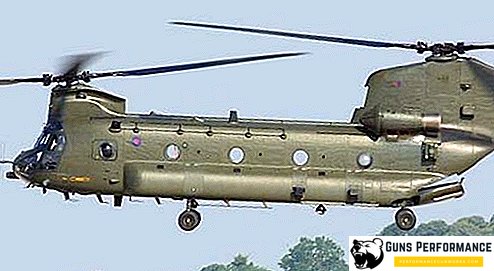The military conflicts of the last few years have clearly shown that a guided anti-tank missile has become the most formidable opponent of a tank on the battlefield. Anti-tank missile systems (PTKR) were actively used in the conflict in the east of Ukraine, the use of Hezbollah by the Russian Kornet-E ATGMs practically disrupted the offensive of the Israeli army in Lebanon in 2006. Currently, the Syrian "rebels" successfully destroy the armored vehicles of Bashar al-Assad with the help of American ATGM Tow, developed in the midst of the Cold War. Today, the production of anti-tank systems is one of the fastest growing segments of the world arms market.
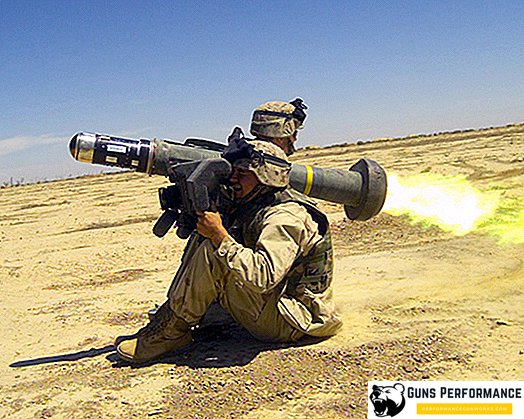
A bit of history
The history of anti-tank missile systems began during the Second World War. The first samples of this weapon were created in Germany. The Ruhrstahl X-7 complex ("Little Red Riding Hood") was created by the Germans already at the end of the war; there is no information about the use of the complex in actual hostilities. Samples of these weapons got to the winners and were used for their own development.
This is how first-generation ATGMs appeared, including the French SS-10, the Soviet Malyutka complex, Cobra systems, Mamba (Germany), and others. The missiles of these complexes were controlled by wires, had a low speed, the firing of these weapons required very high training of personnel, the calculation of the PTKR was very vulnerable, and in the initial part of the missile’s flight there was an impressive dead zone.
To increase the effectiveness of anti-tank missile weapons, it was necessary to equip the complexes with a fundamentally different guidance system. This is how second-generation ATGMs appeared, which were equipped with semi-automatic HF. The operator had only to aim the aiming mark at the target and launch the rocket. After that, it was required to hold the target in the sight, the rocket was directed at it automatically by wire or with the help of a laser beam.

Around the beginning of the 90s of the last century, the development of third-generation anti-tank systems with a fully automatic guidance system, which fully implement the principle of "fired and forgotten", began in many countries. Today in the world there are several samples of such weapons, the most famous of them is the American ATGM FGM-148 "Javelin".
Creation of "Javelina"
FGM-148 "Javelin" was conceived as a replacement for the outdated Dragon complex, which has been in service with the American army since the mid-70s. The test of new weapons began in 1993.
It was originally planned to manufacture more than 70,000 complexes only for the US Marine Corps, but the cost of these weapons was much higher than planned, so the order was trimmed to 33,000. For the same reason, significantly fewer FGM-148s were able to be exported.
To our time, the United States spent about $ 5 billion on the FGM-148 Javelin program, today the cost of one complex is about $ 100,000. This is an absolute record for such weapons.
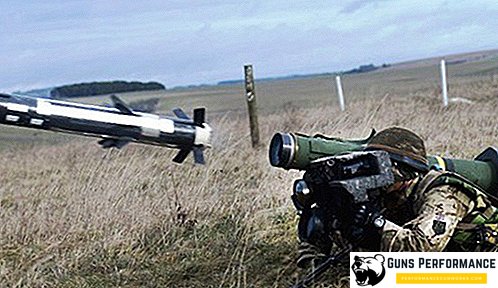
The device FGM-148 "Javelin"
The Javelin anti-tank missile system is intended for the destruction of armored vehicles, sheltered shelters (bunker, bunker, pillboxes and pillboxes), as well as low-flying air targets. FGM-148 can be used day or night, in conditions of poor visibility and in adverse weather conditions. Soft start allows you to use this complex from the premises, as well as from closed positions.
The complex has a modular design, it consists of a launch container with a missile and a command and launch unit (CPB). The body of the launch canister is made of carbon fiber with epoxy resin, it protects the rocket from external influences, the rest of the complex elements are mounted on it. After the shot, the container is discarded.
In particular, a cooling and power supply unit is mounted on the launch container, which contains the battery and the cooling gas tank, which cools the rocket homing device to the required temperature. CPB is also mounted on the body of the container.
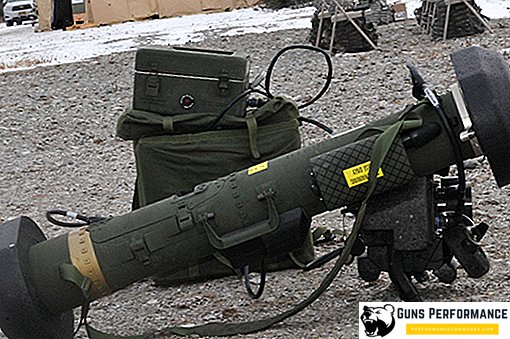
The command and launching unit is a reusable part of the anti-tank complex, it consists of:
- night sight;
- day sight;
- controls (display and indicators);
- handles;
- battery compartment and cooling system for night sight.
FGM-148 "Javelin" has a day sight, as well as a thermal sight, which allows shooting at night, in conditions of heavy smoke and in adverse weather conditions. For the operation of the infrared sight, a cooler is installed in the PBC, which provides it with the necessary temperature.
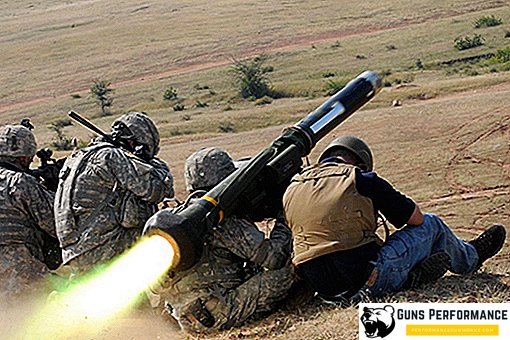
Anti-tank guided missile complex (ATGM) FGM-148 "Javelin" has a tandem warhead, folding wings, an infrared homing head (GOS) and two engines: the starting and the sustainer.
The starting engine takes the rocket out of the launch canister, giving it an initial acceleration. The cruise engine operates on the main part of the ATGM flight path. The missile is equipped with an electronic protection and arming system.
The first charge from the tandem warhead provides neutralization of the dynamic protection of the target, and the second charge penetrates the target's armor and inflicts the main defeat. If there is no dynamic protection, then the first charge increases the effect of the main one. Both charges are cumulative.
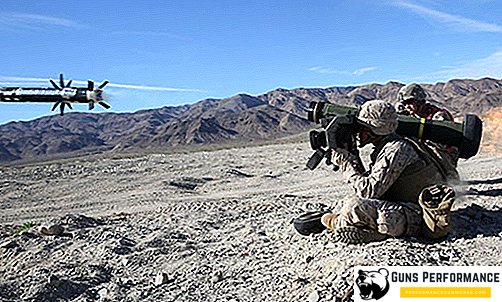
The homing head is equipped with an infrared detector and fuse. They allow ATGM FGM-148 "Javelin" to work on the principle of "fired and forgotten." True, infrared GOS significantly increases the cost of the rocket.
The GOS ATGM is also equipped with an electronic guidance system, which controls the flight of the rocket and sends signals to the drive unit for its correction.
The complex has two attack modes: on top of the target and in a straight line. The operator selects the desired mode immediately before launching the rocket. The attack on the target from above allows you to hit armored vehicles in its upper (least protected) projection.
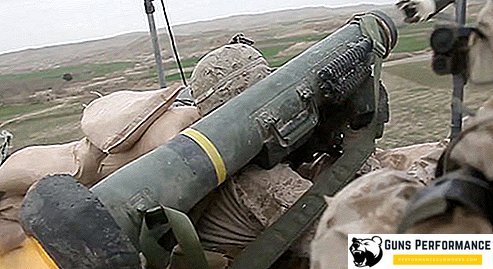
Advantages and disadvantages of the FGM-148 "Javelin"
Americans are proud of this complex and have every reason to do so. Compared with the second-generation anti-tank systems, the Javelin has undeniable advantages:
- the principle of “shot and forget”, which allows to significantly reduce the vulnerability of the ATGM operator;
- the homing head with an infrared detector makes most of the electronic countermeasure complexes (such as “Shutter”) useless;
- tandem warhead and large caliber makes "Javelin" a mortal threat to virtually all types of existing armored vehicles;
- the attack mode of the target from above allows to hit the least protected part of the tank and bypasses the action of the majority of modern active protection complexes (KAZ);
- night vision sight (thermal imager) allows effective fire at night, in smoke and in adverse weather conditions;
- the starting engine provides low visibility of the launch site and allows the complex to be used for firing from rooms and shelters;
- "Javelin" is a portable and highly mobile complex, this fact significantly increases its effectiveness and increases survivability.
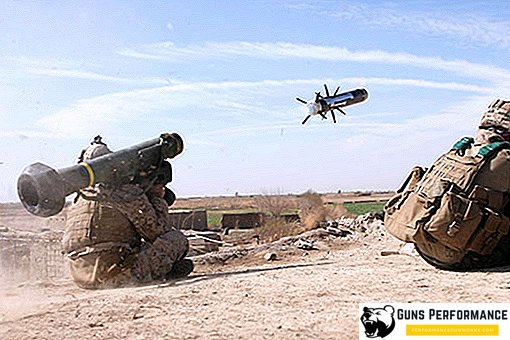
However, this complex has its drawbacks, which have been repeatedly pointed out by experts:
- relatively short range (2000 meters);
- the cooling time of the NVD is about 4 minutes, the cooling time of the HOS is 10 seconds;
- high cost of the complex and rockets;
- Peculiarities of the operation of NVD and GOS with an infrared sensor.
The last paragraph should be discussed in more detail. The fact is that night vision devices and hfs of this type use their own infrared radiation from the target. In some cases, the radiation of the target can merge with the background radiation of the terrain, then the use of the complex becomes problematic.
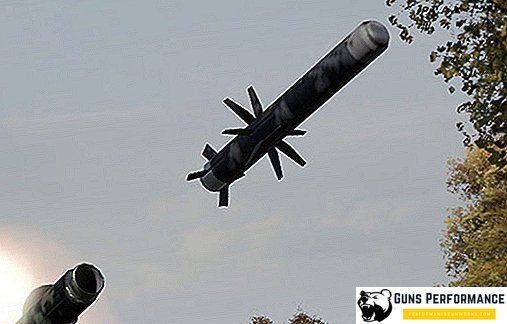
Well, the high cost of the complex is quite affordable for the US Army, which has the largest budget in the world.
Technical characteristics of the complex
| Firing range, m | 50-2500 |
| Maximum flight speed, m / s | 300 |
| Type of warhead | tandem cumulative |
| Penetration, mm | 750 |
| Complex weight, kg | 22,5 |
| Rocket diameter, mm | 126,9 |
| Rocket length, mm | 1081,2 |
| Rocket weight, kg | 11,8 |
| Weight of aiming starting device, kg | 6,36 |
| Shot preparation time, with | 30 |
| Recharge time (replacement of TPK), with | 20 |
| Calculation, people | 1-2 |








